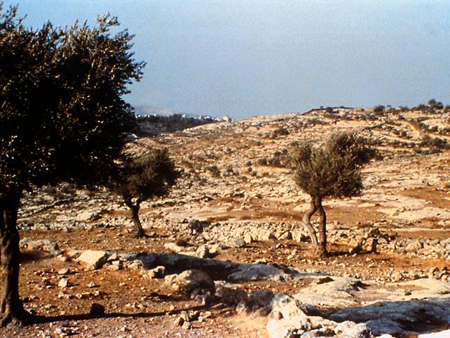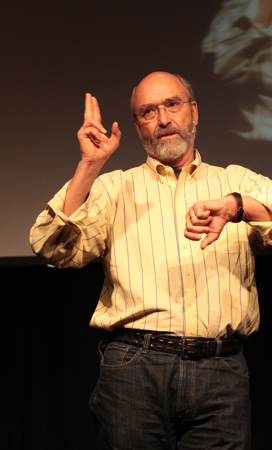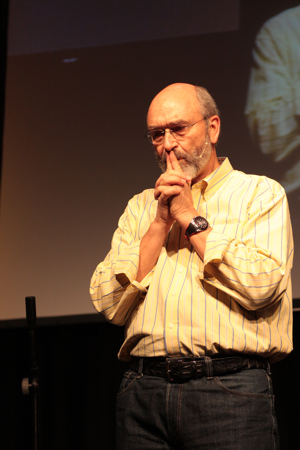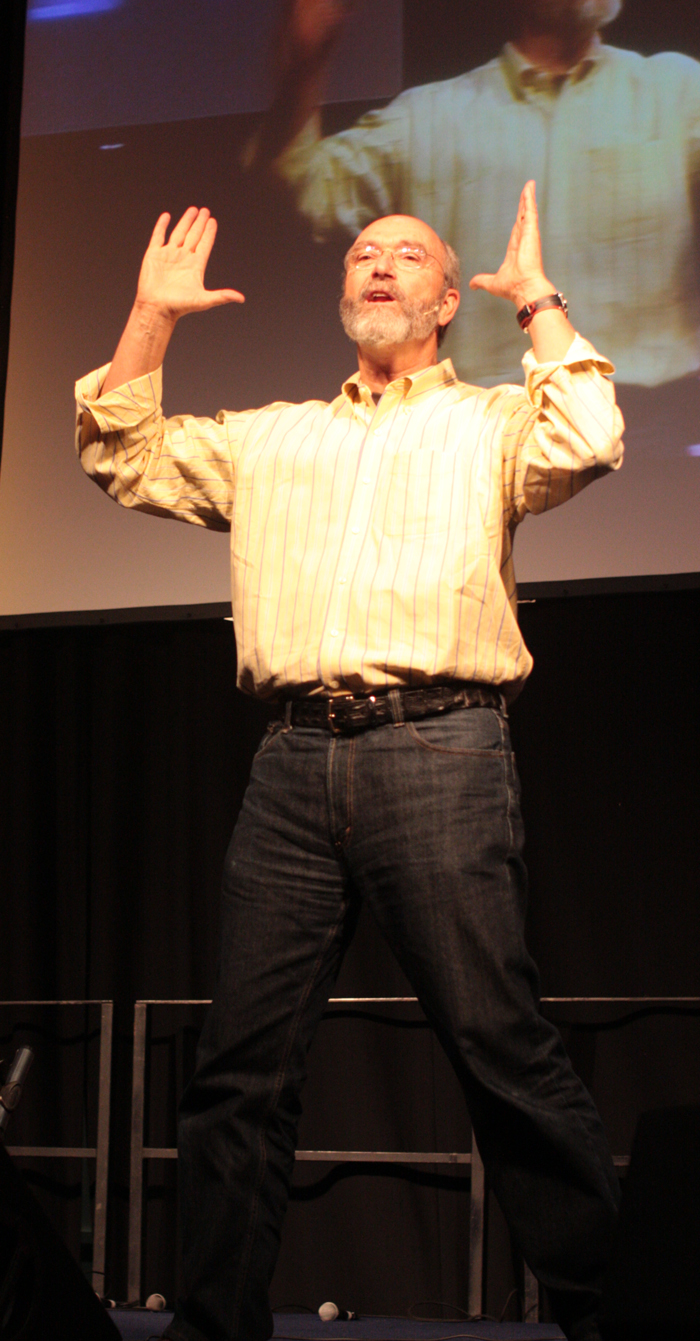The new President's vision
 When you start a new job, I mean a really new job, there is the thought, “how do I do this?” That was exactly how Pastor Lorance Johnson reacted when he had the phone call saying, “We would like you to become the new President of the Seventh-day Adventist Church in the north of England. Will you accept the responsibility?”
When you start a new job, I mean a really new job, there is the thought, “how do I do this?” That was exactly how Pastor Lorance Johnson reacted when he had the phone call saying, “We would like you to become the new President of the Seventh-day Adventist Church in the north of England. Will you accept the responsibility?”
Pastor Johnson said “yes”, and began to plan to do his best with God’s guidance – and not a little trepidation.
The next stage in the story comes as Lorance came to Nottingham and found himself in need of God’s immediate guidance. The answer to the need came in the form of a compulsion to read a certain passage of the Bible.
That passage can be found in the Old Testament of the Bible, in the book of Nehemiah.
 Consider the scene. Jerusalem is the capital city that for years had been neglected and had become run-down. The people had been deported to another country and had only recently returned to their capital from Babylon where they had been in captivity.
Consider the scene. Jerusalem is the capital city that for years had been neglected and had become run-down. The people had been deported to another country and had only recently returned to their capital from Babylon where they had been in captivity.
Nehemiah, the hero of our story, is Jewish but was a highly placed official in the Babylonian government. He had done well as an administrator and was in a position of power. He had the ear of the king. Though he remained in Babylon he still kept a deep interest in the future welfare of Jerusalem and the lives of his people.
 Nehemiah was one of those people who had learned how to manage a project from beginning to end.
Nehemiah was one of those people who had learned how to manage a project from beginning to end.
The account that follows comes direct from the Bible and describes how Nehemiah dealt with the construction project he was working on. The words we hear are thousands of years old and come from Nehemiah’s mouth.
“It came to pass in the month of Chislev, in the twentieth year, as I was in Shushan the citadel, that Hanani one of my brethren came with men from Judah; and I asked them concerning the Jews who had escaped, who had survived the captivity, and concerning Jerusalem. And they said to me, “The survivors who are left from the captivity in the province are there in great distress and reproach. The wall of Jerusalem is also broken down, and its gates are burned with fire.”
 So it was, when I heard these words, that I sat down and wept, and mourned for many days; I was fasting and praying before the God of heaven.”
So it was, when I heard these words, that I sat down and wept, and mourned for many days; I was fasting and praying before the God of heaven.”
Nehemiah hears about the problem, is moved to help and then fasted and prayed. You realise as you read that our hero doesn’t just leap in and decide, “I’m the man for the job.”
His first approach is to realise, ‘I can’t do this by myself.’ The next step follows,
“And it came to pass in the month of Nisan, in the twentieth year of King Artaxerxes, when wine was before him, that I took the wine and gave it to the king. Now I had never been sad in his presence before. Therefore the king said to me, “Why is your face sad, since you are not sick? This is nothing but sorrow of heart.”
So I became dreadfully afraid, and said to the king, “May the king live forever! Why should my face not be sad, when the city, the place of my fathers’ tombs, lies waste, and its gates are burned with fire?”
 Then the king said to me, “What do you request?” So I prayed to the God of heaven. And I said to the king, “If it pleases the king, and if your servant has found favour in your sight, I ask that you send me to Judah, to the city of my fathers’ tombs, that I may rebuild it.”
Then the king said to me, “What do you request?” So I prayed to the God of heaven. And I said to the king, “If it pleases the king, and if your servant has found favour in your sight, I ask that you send me to Judah, to the city of my fathers’ tombs, that I may rebuild it.”
Instead of just putting down his tools, impulsively handing in his resignation and then emptying his bank account, Nehemiah, the good planner, goes about his task in the way he has been trained to. He asks the king for permission to take a Sabbatical and gets the authorisation he needs.
The next stage takes us to Jerusalem amid hints that the neighbours might be a little uneasy at the thought of developments in Jerusalem.
“So I came to Jerusalem and was there three days. Then I arose in the night, I and a few men with me; I told no one what my God had put in my heart to do at Jerusalem; nor was there any animal with me, except the one on which I rode. And I went out by night through the Valley Gate to the Serpent Well and the Refuse Gate, and viewed the walls of Jerusalem which were broken down and its gates which were burned with fire. Then I went on to the Fountain Gate and to the King’s Pool, but there was no room for the animal under me to pass. So I went up in the night by the valley, and viewed the wall; then I turned back and entered by the Valley Gate, and so returned. And the officials did not know where I had gone or what I had done; I had not yet told the Jews, the priests, the nobles, the officials, or the others who did the work.
Then I said to them, “You see the distress that we are in, how Jerusalem lies waste, and its gates are burned with fire. Come and let us build the wall of Jerusalem, that we may no longer be a reproach.” And I told them of the hand of my God which had been good upon me, and also of the king’s words that he had spoken to me.”
Can you imagine the scene? Nehemiah picks his way through the stones and rocks surrounding crumbling Jerusalem. He takes good notes as he makes his way around the walls. I get the impression that there is a long list of snags and problems that get presented to the officials he meets in the morning.
We can’t say that Nehemiah is the kind of leader who paints a glossy picture that all is well as he describes his night’s work and his observations. He speaks of the shame he feels – and then of God’s call that the walls should be rebuilt. Nehemiah, as leader, also tells of the support of the King. My impression is that Nehemiah has a plan that gives his enthusiasm for the task the chance of success.
The next phase of the story follows as a hint at external opposition is again revealed.
“But when Sanballat the Horonite, Tobiah the Ammonite official, and Geshem the Arab heard of it, they laughed at us and despised us, and said, “What is this thing that you are doing? Will you rebel against the king?”
So I answered them, and said to them, “The God of heaven Himself will prosper us; therefore we His servants will arise and build, but you have no heritage or right or memorial in Jerusalem.”
Then Eliashib the high priest rose up with his brethren the priests and built the Sheep Gate; they consecrated it and hung its doors. They built as far as the Tower of the Hundred, and consecrated it, then as far as the Tower of Hananel. Next to Eliashib the men of Jericho built. And next to them Zaccur the son of Imri built.”
It would appear that Sanballat and Geshem don’t have the ear of the King, it would also appear that their attack on Nehemiah’s plan has an element of mockery to it. There are two real possible responses. One way ahead is to respond to the challenge, the other reply is to simply carry out the task.
Nehemiah is not just an administrator but also a leader with wisdom.
That is the story, what does it mean?
 Years ago I wrote what I thought was a really good essay on the life of the great Victorian missionary Hudson Taylor. The teacher was happy with the essay, but gave me a lowered grade because I didn’t take the facts I had found and applied them.
Years ago I wrote what I thought was a really good essay on the life of the great Victorian missionary Hudson Taylor. The teacher was happy with the essay, but gave me a lowered grade because I didn’t take the facts I had found and applied them.
What is there to apply from Nehemiah’s story?
Pastor Johnson doesn’t lead on his own. He has advisors around him. His advisory team met to pray, consult and advise on the way that Nehemiah’s story could be brought up to date. The results were these.
The modern walls we need to rebuild are not made of brick; they are not broken because the gates have gone rotten. The modern walls that need rebuilding, it was decided, relate to the failure in human society, in church society, to reach the standards God has set for us. It was realised that we truly have fallen short of the glory of God.
In a sense that was very much like Nehemiah’s midnight trip around Jerusalem. He identified the problems and came back to his leadership team with the issues.
The response then was to work out how to address the problems of having broken walls around us, walls that we want to rebuild.
The ancient response was to take hammers, chisels, straight edges and mortar to build walls.
We work with people. We need to find a way to help people recognise their position and to provide a series of tasks to help people rebuild their own ‘walls’.
As you continue deeper into this section of the website you will learn more of the aims and objectives our Conference is following, you will also discover how you can apply those aims and objectives to your own life, to the life of your family, the Ministry you work with in church – and can make suggestions that we will listen to that will apply to the church we worship in.
You can see Pastor Lorance Johnson's early understanding of his vision in a short video here.